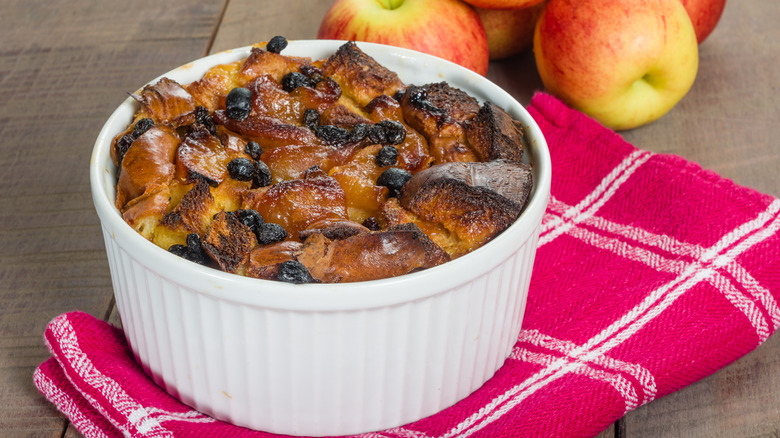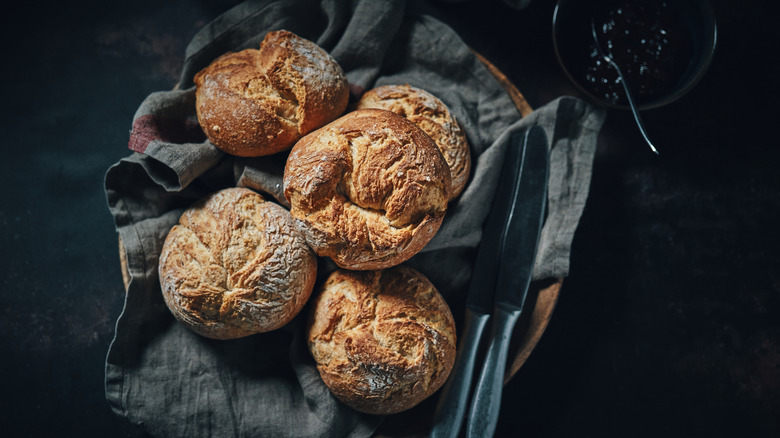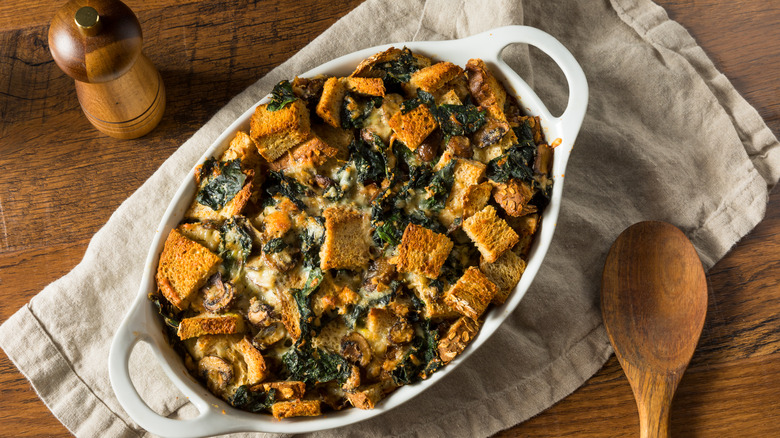For The Best Bread Pudding, The Kind Of Bread You Use Matters
It's not hard to see why bread pudding is a beloved dessert. The name alone combines two of the most wonderful things in life, and with that as a blueprint, it'd be tough to go wrong. Add in that it is easy and customizable, as well as a smart choice for both economic and environmental reasons (a delicious answer to food waste), and you have the makings of a culinary classic.
But as easy as it is to enjoy bread pudding, making it requires some consideration. Like many dishes that are composed of very few ingredients, the selection of those components is critical, since there's little to hide behind, or — in the case of bread pudding — hold things up. While it is possible to make this dish with just about any bread you have on hand, certain types will definitely make a difference to the finished product in terms of structure and texture.
You're looking for bread that feels sturdy and substantial, so it won't turn to mush when soaked in custard and baked. Some examples would be elevating your bread pudding with sourdough or French bread, an Italian or country loaf, or simple brioche. It's also helpful to get your loaf in its entirety so you can slice it yourself to the size and shape specs of your recipe. Following these simple suggestions will help ensure a bread pudding that's not too soupy and not too dry, but just right and ready for your favorite flavorings and mix-ins.
Constructing your bread pudding
Once you have your bread selection, you can get started making your dream dish of sweet, carby goodness. A common tip is also to use stale or day-old bread; the theory being that the dryer pieces will be more absorbent of the custard mixture. That said, if you can't get your hands on anything besides the fresh and fluffy kind, you can mimic the texture by toasting fresh bread a bit, which will help remove some of the moisture.
Once you have your bread, converting this humble element into a spectacular dessert couldn't be simpler. Most recipes resemble French toast, meaning that you will combine eggs, milk, butter, sugar, and any spices or seasonings you prefer, to create a creamy, luscious custard. From there, you pour your wet ingredient mixture over your bread bits and bake (or, alternately you can use an air fryer or slow cooker). Then, just sit back while you wait for a truly blissful bite.
Building on your perfected bread pudding
Now that you have the framework, the real fun begins. Bread pudding is basically a blank canvas for just about any flavor combinations you can come up with. Classic mix-ins are raisins (or similar, like dried cherries, currants, or dates), along with nuts like walnuts or pecans. It's common to also find spices like nutmeg and cinnamon, much like a French toast flavor profile.
That said, you can sidestep the dried fruit in favor of fresh, as in a peach or strawberry bread pudding. Banana also works well here, paired with its good friend, chocolate chips. Pear, pineapple, blueberry, and apple have all been known to take a custard bath with bread, too. And speaking of baths, don't hesitate to add a little extra kick with some booze like rum, brandy, or bourbon.
While the custard should make your pudding creamy enough, it never hurts to add a little something on top. Creme anglaise is a common condiment for this dish, but classic vanilla whipped cream is inarguably ideal, too. Drizzle with caramel sauce, melted chocolate, or Nutella for sweet nirvana, but don't sleep on savory bread pudding, either. Incorporate some kale and mushrooms,add cayenne and parmigiano reggiano for an umami punch, even fortify with sausage or other protein for a complete meal all in a single dish. Having a handle on the best bread for the job means your work is all about creating your own pudding perfection.


